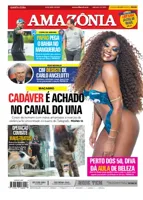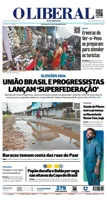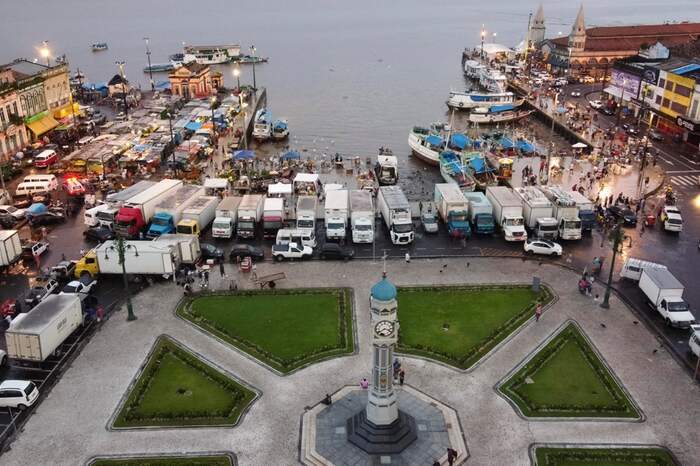Pará leads fish export ranking; activity generated more than 71 million dollars in 2020
Pará production already represents 27.5% of the total in Brazil. In the ranking, Pará is followed by Santa Catarina, São Paulo and Rio Grande do Norte
Some of the largest rivers on the planet are located in the Brazilian Amazon. Giants like the Amazon, with 6,400 kilometers of extension; and the Rio Negro, with 2.2 thousand kilometers, among others that feed a powerful food chain. One of them – fish – is one of the greatest nutritional and economic resources – a source of income for thousands of workers. In addition to the Amazon River and its great river mouth, on the Amazon coast of the Atlantic Ocean, the Tapajós, Tocantins and Xingu rivers stand out in terms of extension and volume, water courses that are the largest in the State of Pará, which recently assumed the leadership in the Brazilian ranking of fish exports.
Listen to the comment on this news:
With about 128 companies operating in Pará, in 2020, fish exports from the State represented 27.5% of the total exported by Brazil, a percentage that brought to the North region the leadership position that was in the Northeast. In value, this percentage represented the figure of US$ 71.52 million in exports last year. And they also remained high in the first half of 2021, with US$ 27.09 million added - a 24.4% share in the national market, and which still maintains Pará's first place in the ranking of states, according to registered figures in the balance of exports consolidated by the Brazilian government, in the Secretariat of Commerce and International Relations, of the Mapa (Ministry of Agriculture, Livestock and Supply).
In the details of Comex Stat, the Brazilian federal government's system for consultation and extraction of data on Brazilian foreign trade, Pará led fish exports, followed by Santa Catarina, São Paulo and Rio Grande do Norte, last year and in the first half of this year - accounting for 82.6% of products with other cuts and for 20.9% of fillet cuts, where Pará is also the leader, followed by Ceará, Santa Catarina and Rio Grande do Sul.
Pará also stood out in the production of crustaceans and molluscs, being the third Brazilian state that exported the most, only behind Ceará and Bahia. In this production, Pará has already earned US$ 1.79 million from January to June 2021 alone, while in 2020, it obtained US$ 3.042 million. According to the State Secretariat for Agricultural Development and Fisheries (Sedap), 53% of sales last year were lobsters and 46% were frozen shrimp. In these first six months, 90.84% were shrimps and only 8.80% were lobsters.
"Pará has a production predominantly of native fish, mainly tambaqui" - Francisco Medeiros, Executive President of Peixe BR.
In order to have a dimension of the weight of this wealth generated by water, it is worth noting that, in 2020, exports of the entire agribusiness sector in Pará moved US$ 1.94 billion (an increase of 15.74% compared to 2019, and an increase of 14.84% compared to the last decade, based on the year 2010, which registered US$ 1.69 billion in business), and represented a volume of 3.26 billion tons (with volume gain 150%, when comparing the amount in tons registered in 2010), point out the data from Sedap.
In this context, in 2020, the export value of all fish products registered US$ 71.52 million (a slight reduction of 1.43% compared to the previous year, but an increase of 90.76% when compared to the value registered in the year 2010). In 2020, the volume of fish products from Pará shipped out of Brazil was 9,75 thousand tons (an increase of 16.63% compared to the previous year, and an increase of 67.34% when compared to the registered value in 2010, says Sedap in its balance sheet for the decade).
Peculiarities in the domestic market and advancement goals
About this leap in exports from Pará, the National Association of Pisciculture (Peixe BR) points out, in its 2021 Yearbook, a peculiarity: the state still needs to import fish from farms to supply the domestic market. “Pará has one of the highest per capita consumption of fish in Brazil, and part of that consumption is made up of fish farming products. However, the state remains dependent on the purchase of fish from Mato Grosso, Rondônia, Maranhão and Tocantins to supply its domestic market. And it contributes to the promotion of activity in these states”, assesses the entity's publication.
Among farmed fish, Pará produced 25,400 tons in 2020, with native species being the most produced (24,900 tons), in addition to tilapia (400 tons), considered exotic, but also with great representation in this production. According to Peixe BR, the state has potential, but still needs to be increased in environmental public policies that make the activity viable.
“Pará has a production predominantly of native fish, mainly tambaqui, and a growth rate below the national average, which leads it to buy tambaqui in other states”, assesses Francisco Medeiros, Executive President of Peixe BR.
Apoliano Nascimento, president of the Union of Fishing Industries, Aquaculture and Shipowners and Producers, Owners of Fishing Vessels of the State of Pará (Sinpesca), agrees that the role of Pará in the fish economy is very positive for the sector, but it still needs to grow. “This increase generates income, employment and attracts more investments for the entire fishing chain. But Pará is very rich in fish species and we have plenty of water available to increase production and, consequently, sales”.
"Fish is more than food. It is a tool to change the social, economic and environmental" - Apoliano Nascimento, president of the Sinpesca.
But, for this, the Sinpesca owner says it is essential that the State direct public policies for effective ordering. That is, understanding that each species is produced and captured in a different way and, therefore, specific regulations are needed, in addition to social and environmental responsibility. “Fish is more than food. It is a tool to change the social, economic and environmental. Therefore, the fishing activity needs to be done in a conscious way, looking at all these fronts”.
Investments in fishing terminals
The President of the Republic, Jair Bolsonaro, included the Public Fishing Terminal of Belém in the National Privatization Program (PND). The measure was published in a decree in the Official Gazette of the Union last July 6th. In addition to Belém, the decree includes seven public fishing terminals in the national privatization program: Aracaju (SE); Cananeia (SP); those in Manaus and Amazonas (both in AM); and also those in Natal (RN); Santos (SP) and Vitória (ES). The amount of money to be invested in the acquisition and improvements of the terminals will be R$ 71 million.
In Belém, the forecast is that 18,773 tons of fish will be unloaded annually, after the opening in the capital, according to a study by the Ministry of Agriculture, Livestock and Supply. The construction of the Belém Fishing Terminal is expected to generate 58 direct jobs and around 600 indirect ones, to serve artisanal and industrial fishing, mainly benefiting fish wholesalers, fishmongers, glaciers, local traders, among others, according to the survey. The terminal will be built on the Arthur Bernardes highway, an area with easy access to the BR-316, the main production flow route.
Pará brought a rise in national fish exports
Pará's jump in the leadership of fish exports was reflected in the Brazilian aquaculture market, which closed the first six months of 2021 with an increase of 35%, compared to the same period in 2020, totaling US$ 7.2 million in sales to the foreign market. According to data from the Ministry of Economy, growth was mainly driven by sales in the second quarter of 2021, which totaled US$ 3.9 million - a performance 22% higher than the previous quarter, and 83% more compared to the second. quarter of 2020.
The fish most exported by Brazil in 2020 were classified as other frozen lobsters, with US$ 57.67 million (22.2%); other frozen fish, except filets, with US$ 32.29 million (12.4%); frozen snapper, with US$ 29.18 million (11.2%); fish heads, tails and swim bladders, with US$ 23.41 million (9.0%); and frozen whole lobsters, with US$ 16.16 million (6.2%).
The three main buyers of fish sold by Brazil in 2021 are the United States, China and Chile. Despite the rising results, the deficit in the balance of trade for Brazilian fish farming was US$ 169 million in the second quarter of 2021 - 13% more than the deficit in the first quarter of the year, influenced by the increase in imports, which reached US$ 173 million in the second quarter of 2021.
The motif has a first and last name: Salmo salar, a species popularly known as salmon. A success in Japanese food restaurants, fish was responsible for US$ 161 million of the total imported by Brazil in the period, that is, 93% of the total. Coincidentally, most of the salmon consumed by Brazilians comes from Chile, which is the third main buyer of Brazilian fish.
Breeding fish is fundamental for the future of fish in the Amazon
The production of fish in the Amazon “cannot depend only on the good will of the tide”, says, definitively, the agronomist and doctor in agricultural economics Alfredo Homma, a researcher at Embrapa Amazônia Oriental. The reason for this, says Homma, is that, from an economic point of view, the fishing market in the region should not depend on the natural reproduction of the various species of native fish, which today guarantee fishing for export. To guarantee a volume of exports that generates income and returns for the economy, he says, the Amazon needs to make a revolution in fish farming.
This means investing in raising native fish in captivity. Without this reinforcement in creation, production will always be at the mercy of the tide - and even the threat of extinction of some species, such as the pirarucu, which, although native to the Amazon, is not easily reproduced in captivity, as it is carnivorous and needs to be trained. permanent couple, among other difficulties that are not presented by species such as gó hake, tambaqui and peacock bass, among others.
The researcher guarantees that fostering this production through captive breeding is totally viable. He cites the example of the state of Rondônia, which has become the leader in Brazil in the production of native fish from captivity, with 65 thousand tons per year. The second place in this position is occupied by Mato Grosso, with 42 thousand tons. In third is Maranhão, with 40.8 thousand tons. Pará appears in fourth position in the ranking, with 24.9 thousand tons per year. The fifth place is also in the Amazon territory, with the state of Amazonas, which produces an average of 21,500 tons per year.
In Homma's assessment, precisely the states furthest from the sea, such as Rondônia and Mato Grosso, are in the lead in the creation of native fish. And this is due to important policies that must be extended to the entire Amazon - instead of what, for the researcher, is a repeated discourse of “wealth through biodiversity”.
“It's no use thinking that you can turn a fisherman into a fish breeder. The promotions must be different, but both must exist” - Alfredo Homma, agronomist and doctor in agricultural economics.
“This discourse that biodiversity and natural resources are reflected in economic development is a great fallacy. And there is an urgent need to change this thinking and invest in production. Of course, this production can and must use the natural resources of the rivers, which are abundant in the region, but we cannot expect nature to be responsible for producing the wealth on a large scale”, emphasizes Alfredo Homma.
The specialist also claims that public policies to encourage fish production need to be different for farmers and for artisanal fishing workers. “It's no use thinking that you can turn a fisherman into a fish breeder. The promotions must be different, but both must exist”, emphasizes the researcher from Embrapa, noting that the Amazon scenario is also favorable to investments in more studies and research. “Pará, for example, should already have an advanced fish farming center. Today we have at Embrapa and other institutions some studies, but a robust investment in studies and technologies is essential to leverage the production of fish in the Amazon”.
Fishing industry moves a large production chain
A life divided between ten days on land and about 20 days on the high seas. This is the routine of workers in the fish chain, so that a productive industrial goal can be achieved. The boats carry groups of fishermen, formed on average by eight professionals: the boat captain, two assistants, a driver, fishermen with skill in fishing nets, and a professional ice creamer. Only if, as they say, “the sea is for fish”, will the troop return to the port located on the Arthur Bernardes highway, in the capital of Pará, in less than 20 days.
On land, the main retail outlet for fish in Belém is the Ver-o-Peso market. It is the largest open fair in Latin America - and where some workers spend a good part of their lives. João Oliveira Filho is a good example. Of his 63 years, 42 are already dedicated to work in the market, receiving fish from various regions of Pará. “We receive fish from offshore fishing companies, usually from the municipalities of Bragança, Augusto Corrêa and others in the Salgado region [in the northeast of Pará], but we know that production can improve a lot”, believes the merchant.
The rocker Flávio Ferreira, 44, has been at Ver-o-Peso for 20 years. Every day he arrives at the stop at 11 p.m., and only leaves at 7 a.m. The fish he weighs the most – the best sellers – are “gó” and bream. But he also believes production can improve. “This spawning period for “gó” is good. In the others, fish is scarcer, but we are optimistic with the increase in sales in recent months”, cheers him up, who works as a family, with his wife and two children.
“We left Belém at 5 am one day and at 1 am the next day we started fishing. With sardines as bait on the hooks, we fish an average of 200 kilos per day” - Marcos Figueiredo, fisherman.
Marcos Figueiredo, 47 years old, has owned a boat for 20 years and now works at both ends of the chain: he sends the boat to sea, with a team, and stays at Ver-o-Peso, working on sales. “On each trip, we fish an average of 15 tons and return. With that we are able to maintain a good sale”, he assesses.
Figueiredo works closely with Thyago Pimenta, a fish fillet cutter that already has 70% of its sales made to order to restaurants in Belém. “I cut sea bream and yellow hake. Most sold in large quantities, which fell in the pandemic. But now sales are already returning, and we hope that they will grow even more”, he affirms, optimistically.
More than 100 companies operate in the fishing market in Belém
In Belém, only one of the more than 100 companies in the fishing sector in Pará, exports around 40 tons of fish per week. And, in 2020, it shipped 1,900 tonnes abroad, in addition to supplying the Brazilian market with 340 tonnes. The fish most sold today by the industrial line installed in the Tapanã neighborhood are the snapper (red fish), the gurijuba, the yellow hake, the white hake, the goha hake and the mackerel.
From the Atlantic Ocean to the exterior, the road is long and passes through the hands of several workers in the production chain. Among them are the glaciers, professionals responsible for treating and conserving the fish on the vessel, from the moment it falls to the fisherman's bait until it is landed in the industry. Marciano Rocha is one of those workers. “We left Belém at 5 am one day and at 1 am the next day we started fishing. With sardines as bait on the hooks, we fish an average of 200 kilos per day”, he says.
On Wednesday (4), the vessel Marciano was working on returned with more than seven tons of fish, after the crew spent 23 days on board. “When the fishermen catch the fish, the assistants and I already run to treat, freeze and store them in the urn”, he explains. Born in Ceará and Pará at heart, he has been working in the fish business since he was 14 years old. He started out as a fisherman, before becoming a boat glacier. For him, Pará's leading role in exports is good for the entire production chain. “We make a living from it and are happy with the news. With sales on the rise, me and all my colleagues won, from the simplest fisherman to the industry”, he explains.
After landing, the fish begins to be processed at the factory, the second step towards export. “Initially, we do the commercial classification by species, size and weight, in addition to sensory analysis, to separate what can be shipped abroad or in the domestic market, as each one has its requirements. Washing and peeling are also part of the process to bring the product up to quality standards”, explains fishing engineer Rebeca Pereira.
“It is necessary for us to invest in qualified labor to continue growing" - Mirian Carvalho, general manager of the company.
The production supervisor, Antônio Nascimento, says that the market abroad is very demanding, raising the level of quality necessary for the product to be well accepted abroad. “After all this preparation phase, we removed all of the fish's viscera and classified it again, to finally freeze and store, the last step before packaging for export. This is all done very carefully. To export, the fish has to be perfect, without any tears”, he details.
Mirian Carvalho, general manager of the company, assesses that, despite the good performance of Pará in the international fishing market, the scenario could be even better. “It is necessary for us to invest in qualified labor to continue growing. This is still a difficulty for the industry: finding fishermen and helpers who take good care of the fish during the fishing period, in addition to other professional workers to work in the processing”.
Rebeca agrees that the industry's current challenge is to improve the raw material and, consequently, the workforce. “In December of this year, ordinance 310 will come into effect, which requires vessels supplying fish to industries to have a certificate of good handling practices on board. This will already help these fishing companies to have more quality”, complements Rebeca, referring to Ordinance No. 310, of the Secretariat of Aquaculture and Fisheries, which begins to be in effect on December 29, 2021.
After this date, only certified fishing vessels and members of the official list will be able to supply raw material to establishments under official inspection service. Among the rules to be followed are the prohibition of the presence of animals considered as pests, domestic animals and any other unrelated to the process in primary production fishing vessels - in addition to the requirement that the boats be structured and maintained in hygienic and sanitary conditions, to avoid contamination of the raw material.
The main buyers of the Belenense development are the United States, China, Canada and Colombia. In the domestic market, the states that buy the most fish and shellfish from the factory located in Belém are exactly São Paulo, Minas Gerais and Manaus. The company also supplies supermarkets in Belém.
European countries are potential buyers. However, they have not bought from Brazil since 2018, when the Ministry temporarily suspended the export of fish to the European Union. The preventive measure was accompanied by an action plan to respond to the questions raised after the European audit mission on Brazilian soil, which took place in September 2017.
COMPARTILHE ESSA NOTÍCIA


































